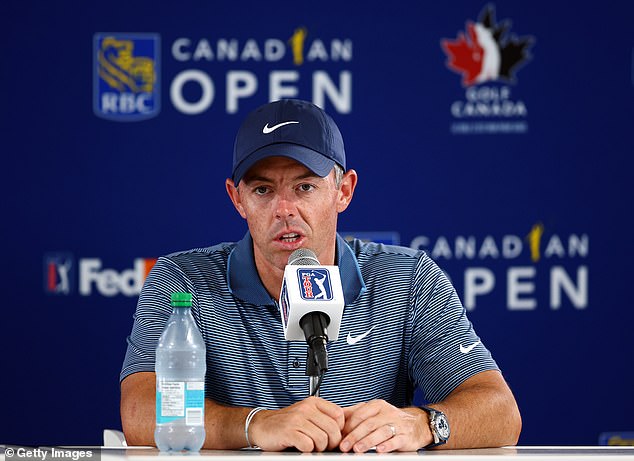Rory McIlroy Sparks Controversy with Media Relations: PGA Tour’s Concern
Rory McIlroy has made headlines recently for his contentious relationship with the media, stirring concern within the PGA Tour community. Following his historic victory at the Masters, where he completed a career Grand Slam, McIlroy’s reluctance to engage with reporters has prompted discussions around media obligations for professional golfers. This article will delve into McIlroy’s current stance, the implications for the PGA Tour, and what this means for the future of golf media relations.
McIlroy’s Historic Achievement at the Masters
McIlroy’s win at the Masters was a monumental achievement, completing a decade-long quest for a career Grand Slam. This prestigious victory elevated him to world No. 2, reaffirming his status as one of the top players in golf today. The significance of this triumph cannot be overstated, as it solidifies McIlroy’s legacy in the sport and intensifies public interest in his career and future performances.
Recent Media Tensions
Despite his recent success, McIlroy has been less than cooperative with the media during tournaments. His ongoing refusal to engage with reporters has drawn significant criticism and concern from both fans and insiders within the PGA Tour. Specifically, after a disappointing showing at the Canadian Open, where he failed to make the cut, McIlroy’s comments highlighted his discontent with mandatory media duties, arguing that it isn’t enforced by the Tour.
The Implications for PGA Tour Media Relations
PGA Tour officials have expressed unease regarding McIlroy’s decision to avoid media interactions. As one of the Tour’s biggest stars, his actions set a precedent that may influence other players’ willingness to engage with the press. The implications are profound; if prominent figures like McIlroy choose to bypass media responsibilities, it could lead to a domino effect where other players follow suit, further straining media relationships.
McIlroy’s Position on Media Interaction
During a recent interview, McIlroy stated, “I’ve said this for a long time. If they want to make it mandatory, that’s fine,” indicating he feels justified in his decisions during high-pressure situations. His reluctance to adhere to traditional media norms is emblematic of a growing sentiment among athletes who desire greater control over their narratives. While this stance resonates with some, it raises concerns about transparency and the need for athletes to provide insights into their performances.
The Role of Media in Professional Golf
The media plays a crucial role in professional sports, serving as a bridge between players and fans. Through interviews and press conferences, reporters provide context about tournament conditions, player strategies, and personal stories that enhance the viewing experience. However, McIlroy’s actions complicate this relationship, as players increasingly grapple with the pressures of media obligations against their desire for privacy.
Reactions from Industry Insiders
Industry insiders are voicing their concerns about McIlroy’s media approach. Rex Hoggard of The Golf Channel noted that the PGA Tour administration is also concerned about the potential fallout from McIlroy’s decisions. The prevailing sentiment among insiders is that McIlroy’s approach could impact the Tour’s media policies and influence the behavior of less established players.
Potential Changes in PGA Tour Policy
As the situation unfolds, the PGA Tour may need to reassess its media policies. While there is no current mandate requiring players to engage with the media after rounds, the pressure for a more structured policy may grow. Creating incentives for players to interact with the media could help maintain relationships and ensure that fans receive the information they crave.
Upcoming Challenges for McIlroy
Looking ahead, McIlroy will face further scrutiny at upcoming events such as the US Open, where his performance and media interactions will be closely monitored. These tournaments offer a stage not just for golfing prowess but also for opportunities to redefine his relationship with the media. His ability to navigate this landscape will be vital to maintaining his stature within the sport.
Conclusion: A Reflection on Player Autonomy
In the grand scheme, McIlroy’s standoff with the media encapsulates the changing dynamics between professional athletes and their public personas. As players become more vocal about their rights and access to media interactions, the conversation around compulsory media engagements will intensify. For now, McIlroy remains a pivotal figure in this debate, and how he chooses to navigate his media obligations may well influence the future for all athletes on the PGA Tour.
Ultimately, the story of Rory McIlroy serves as a crucial chapter in the evolution of media relations in sports. As stakeholders adjust to these changes, the need for a balance between player autonomy and media responsibility remains at the forefront of discussions in professional golf.


